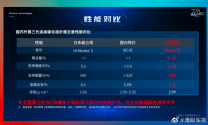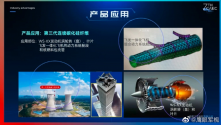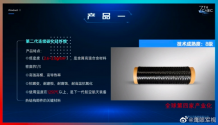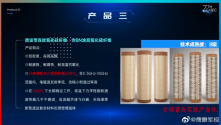My goodness you are thick. The thrust you get from your engine depends on how much work can extract from the air you ingest. How much work you extract depends on the relative speed between the air stream and the exhaust velocity your engine can accelerate the air to. That exhaust velocity is defined by first principle limits via overall pressure ratio the engine can attain and max air stream velocity at the exit throat. If you depend on movement by throwing mass in the opposite direction you can only get as much opposite force as the total energy of your throw allows. *That* is also high school level physics that maybe you didn’t learn. In an air breathing engine that amount of energy you can throw out goes down as you reach convergence between the air coming in and the amount of additional compression you can do to the air before you expel it out. Your overall thrust willl go down as you hit that convergence point. Before you try to lecture me about how planes work you need to educate yourself on how air breathing engines work.Before this conversation goes any further, I'd like you to answer three questions:
1. What are the forces acting on an aircraft in flight?
2. What are the conditions under which an aircraft attains its maximum speed in level flight?
3. In your model of the forces acting on an aircraft in level flight, explain how
You are using an out of date browser. It may not display this or other websites correctly.
You should upgrade or use an alternative browser.
You should upgrade or use an alternative browser.
Chinese Engine Development
- Thread starter jackbh
- Start date
From a complete amateur point of view you guys are basically saying the same thing though right. You said maximum speed is determined when Drag = Thrust, while he is saying it's more complicated and based around how much more energy the engine can take from the air your in. From my point of view it's the same thing just more in depth in the logic. The air stream the aircraft is heading in is causing the drag, and in order to overcome this drag the engine must output more. If the airstream has equal energy as the output of the engine. Doesn't that just basically also mean Drag = Thrust. So I'm confused why both of you are arguing anyways.Before this conversation goes any further, I'd like you to answer three questions:
1. What are the forces acting on an aircraft in flight?
2. What are the conditions under which an aircraft attains its maximum speed in level flight?
3. In your model of the forces acting on an aircraft in level flight, explain how
I'm not trying to insult anyone. When people call out my very simplified model to illustrate why @manqiangrexue is not seeing the performance improvements he expects from the WS-15, I'm going to make sure I check those people's understanding of middle school physics.
The laws of physics don't change because the working principles of the engines involved changes.
The point is 180 kN is not a thrust that’s attainable always and forever in every speed envelope, which is something I’ve been saying from like post 2 on this topic. Either he can’t read or he’s trying to “win” a dumbass argument.From a complete amateur point of view you guys are basically saying the same thing though right. You said maximum speed is determined when Drag = Thrust, while he is saying it's more complicated and based around how much more energy the engine can take from the air your in. From my point of view it's the same thing just more in depth in the logic. The air stream the aircraft is heading in is causing the drag, and in order to overcome this drag the engine must output more. If the airstream has equal energy as the output of the engine. Doesn't that just basically also mean Drag = Thrust.
I assure you I'm not. I think the questions I put to you were very easy to answer yet you refuse to do so. I won't conclude that that's due to any "thickness" on your part, but due to your desire to obfuscate with non-sequiturs because answering the questions straightforwardly would expose the fundamental error you made and offend your intellectual vanity.My goodness you are thick.
I'm not interested in how a specific engine produces thrust or what that thrust depends on. What I asked you about something more abstract. But since you insist on discussing specifics...The thrust you get from your engine depends...
You've made another mistake here as well. The overall thrust does not go down, the derivative of thrust goes down. It reaches zero at your "convergence point" when the engine cannot produce any more thrust. But that's neither here nor there. Once again, I'm not asking you how air breathing engines work, I'm asking you a much more abstract and fundamental question.Your overall thrust will go down as you hit that convergence point.
That's not what I answered. What I answered was this:The point is 180 kN is not a thrust that’s attainable always and forever in every speed envelope, which is something I’ve been saying from like post 2 on this topic. Either he can’t read or he’s trying to “win” a dumbass argument.
That's a profound misunderstanding of elementary physics. He can both read and he's not trying to win any argument. What he's trying to do is be helpful and point out your error and so people here aren't misled.Max speed is not determined by thrust. Thrust tells you acceleration, not speed limit.
Last edited:
I wouldn't take this information too seriously. That person thinks the H-20 will get WS-20 engines so whatever he has to say can be completely discounted.
Whatever the J-20's max speed with WS-10Cs is, expect the max speed with WS-15 to be around 10% higher.
I don’t think maximum speed will be increased and even more so, it makes no sense due to material, RAM finish and so on but what counts is acceleration and fuel economy
I'm not arguing about the relative importance of different kinematic performance parameters. For the record, I agree that acceleration and fuel economy are far more important than maximum speed. However, the fact that the WS-15 has higher maximum thrust than the WS-10C necessitates that the same airframe will have higher maximum speed with the former engine.I don’t think maximum speed will be increased and even more so, it makes no sense due to material, RAM finish and so on but what counts is acceleration and fuel economy
Unless the WS-15 produces far more drag (unlikely given that it has a lower bypass ratio) or the WS-15 is not allowed to access its higher thrust, then it follows from elementary physical principles that a J-20 with WS-15s will have a higher maximum speed than a J-20 with WS-10Cs under the same conditions. I've tried to estimate that increase with a greatly simplified model of drag (a constant times v^2) which ignores a host of effects, but I've made clear in my post that that was an approximation.
To be as clear as I can possibly be, I'm talking about the physical maximum speed of the J-20, not whatever the actual maximum speed is which might be limited by avionics to preserve the RAM coating, structural lifetime, etc.
Last edited:
I haven’t obfuscates anything. You just have terrible reading comprehension. It occurs to me that you may not in fact be equipped to comprehend what I was actually saying. I’ll take the opportunity to say this now because it’s been on my mind every time I watch you derail a thread with these pointless back and forths you start for the sake of trying to win dignity points.I assure you I'm not. I think the questions I put to you were very easy to answer yet you refuse to do so. I won't conclude that that's due to any "thickness" on your part, but due to your desire to obfuscate with non-sequiturs because answering the questions straightforwardly would expose the fundamental error you made and offend your intellectual vanity.
You’re a know-nothing who likes to ride on the coattails of people more knowledgeable than you when it favors your wishcasting prejudices and tries to dumb discussion down to your level when it doesn’t. Most people feel this way about your posts but are too polite to want to say anything. Next time you engage in a topic you don’t have a good comprehension of please sit yourself down and focus on learning rather than running your mouth as if you’re actually bringing anything of value. Your contributions often bring conversation down rather than lift conversation up.
If you’re not interested in how engines produce thrust then you’re not interested in the primary factor determining the speed limits of jet powered planes.I'm not interested in how a specific engine produces thrust or what that thrust depends on. What I asked you about something more abstract. But since you insist on discussing specifics...
Wrong. Actual thrust *will* go down.You've made another mistake here as well. The overall thrust does not go down, the derivative of thrust goes down. It reaches zero at your "convergence point" when the engine cannot produce any more thrust. But that's neither here nor there. Once again, I'm not asking you how air breathing engines work, I'm asking you a much more abstract and fundamental question.
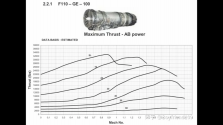
“Max thrust” insofar as it’s the listed thrust you see on a piece of paper is not the determinate of the speed limit. In fact, with that max thrust argument you can’t explain why a F-4 has the same max speed as an F-22 despite having inferior engines and inferior thrust to weight ratio. He is not “helpfully” pointing out anything if he’s wrong about the actual physics involved in determining the question of interest, and is thus being misleading himself. That is not a ding against him. I sometimes get this stuff wrong too. The point of *explaining* why that assertion is wrong isn’t to attack anyone but to clarify common understanding of the topic being discussed. I have definitely repeated before some of the arguments you yourself are getting cagey about.That's not what I answered. What I answered was this:
That's a profound misunderstanding of elementary physics. He can both read and he's not trying to win any argument. What he's trying to do is be helpful and point out your error and so people here aren't misled.
What *does* get a ding is when someone *explains in detail* the reason why some assertion of fact is erroneous or at least highly incomplete and a guy like you tries to turn it into a dumbed down repetitive argument that insists on a simplistic or wrong assertion being right with flimsy attempts at hollow rhetorical intimidation instead of actually matching detailed argument with detailed argument because of a juvenile compulsion to try to “win” and look superior. This is how you bring conversation down. Do better next time.
Last edited:
I didn't ask for your opinion of me nor do I care about it, but what makes you feel you can speak for "most people"?You’re a know-nothing who likes to ride on the coattails of people more knowledgeable than you when it favors your wishcasting prejudices and tries to dumb discussion down to your level when it doesn’t. Most people feel this way about your posts but are too polite to want to say anything.
What I do is exactly the opposite of what you describe. When I trust someone's expertise on a topic I give weight to what they say. If it agrees with my own thoughts, well and good. If it doesn't, I ask questions to get to the source of the disagreement. If I find that I'm incorrect, I change my beliefs; if not, I change my view of that person's expertise.
Asking questions is not dumbing down, it's what people who aren't intellectually insecure do to further their understanding.
You know what, I'll take this opportunity to do exactly that. Go ahead then, teach. Here's your chance to show off how smart you are. Give a simple, abstract model of an air-breathing engine and what determines its maximum speed.Next time you engage in a topic you don’t have a good comprehension of please sit yourself down and focus on learning rather than running your mouth as if you’re actually bringing anything of value. Your contributions often bring conversation down rather than lift conversation up.
Alright, explain why.Wrong. Actual thrust *will* go down.
I never claimed the max thrust is the determinate of the speed limit, I said max thrust is a determinate of the speed limit. But I'm here to learn and do better, so please explain what does determine speed limit.“Max thrust” insofar as it’s the listed thrust you see on a piece of paper is not the determinate of the speed limit.
Here I thought it was because it has a lower drag coefficient; but I'm not here to have an opinion, I'm here to learn and do better. So if you'd be so kind as to teach.In fact, with that max thrust argument you can’t explain why a F-4 has the same max speed as an F-22 despite having inferior engines and inferior thrust to weight ratio.
One tries.Do better next time.
I already explained why your argument is wrong. Go re-read my posts. You’re just throwing a tantrum about it like you always do when you don’t have any substance to stand on.I didn't ask for your opinion of me nor do I care about it, but what makes you feel you can speak for "most people"?
What I do is exactly the opposite of what you describe. When I trust someone's expertise on a topic I give weight to what they say. If it agrees with my own thoughts, well and good. If it doesn't, I ask questions to get to the source of the disagreement. If I find that I'm incorrect, I change my beliefs; if not, I change my view of that person's expertise.
Asking questions is not dumbing down, it's what people who aren't intellectually insecure do to further their understanding.
You know what, I'll take this opportunity to do exactly that. Go ahead then, teach. Here's your chance to show off how smart you are. Give a simple, abstract model of an air-breathing engine and what determines its maximum speed.
Alright, explain why.
I never claimed the max thrust is the determinate of the speed limit, I said max thrust is a determinate of the speed limit. But I'm here to learn and do better, so please explain what does determine speed limit.
Here I thought it was because it has a lower drag coefficient; but I'm not here to have an opinion, I'm here to learn and do better. So if you'd be so kind as to teach.
One tries.

